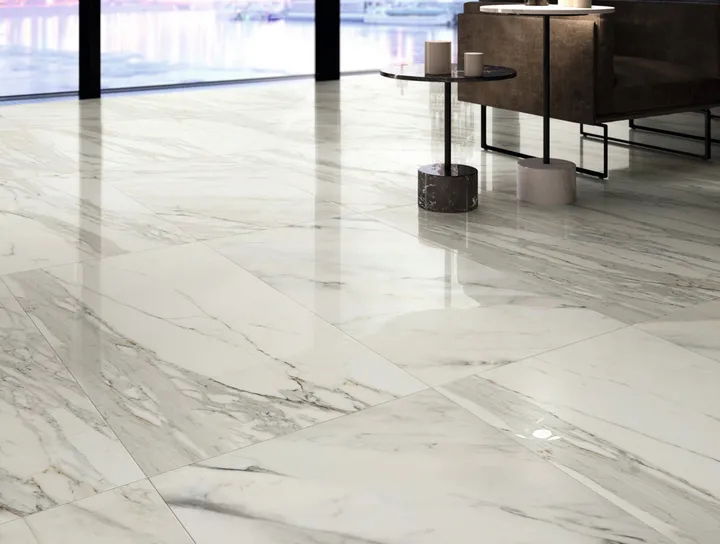China ceramic tile market development status and investment potential research report 2024-2030

The outbreak of the epidemic has had some impact on the Middle East market, but many construction activities have not seriously stopped. In addition, the strong economic situation of the countries in the region has further driven the construction industry to recover rapidly from the slight impact of the epidemic, thereby accelerating the demand for tiles in the region.It is expected that the construction industry of the Gulf Cooperation Council will be driven by multiple government funded and privately funded infrastructure projects, as part of the Gulf Cooperation Council government's efforts to diversify the oil economy. For example, the Qatari government has been investing heavily in developing new sports venues, hotels, airport terminals, and affordable housing in preparation for the 2022 FIFA World Cup and the 2030 Qatar National Vision Plan.
The expansion of modern offices and workspaces, continuous renovation activities of commercial spaces, and rapid industrialization in developing economies are expected to further drive growth in segmented markets during the forecast period. Ceramic tiles are very durable, suitable for high flow commercial applications, cost-effective, suitable for various designs, and require low maintenance. Therefore, it is expected that their demand for commercial space will increase in the coming years.Due to its low cost, high durability, impact resistance, stain resistance, and stain resistance, it is mainly used in residential areas. The floor has a variety of patterns and tones to choose from, making it the perfect choice for creating patterns similar to natural stone and wood.
The ceramic tile markets in Saudi Arabia and the United Arab Emirates are mainly imported, accounting for over 50% of the total supply in countries such as China, India, and Spain. The remaining parts will be completed by regional manufacturers, such as Al Maha Ceramics, Saudi Ceramics, Al Jawdah Ceramics, Forsan Ceramics, and RAK Ceramics.
According to Mordor's statistics, in terms of application areas, floor tiles led the market in 2020, accounting for more than 72.3% of total revenue, because they are resistant to pollution, have low maintenance costs, and are cheaper than stone and marble floor tiles. In addition, microcrystalline technology is increasingly being used to manufacture ceramic tiles with smooth surfaces, clear textures, aesthetics, and high durability, making them ideal for commercial spaces such as hotels, shopping centers, and institutional buildings. The increasing use of sustainable building materials is expected to have a positive impact on the growth of ceramic tiles, as their manufacturing processes are also environmentally friendly, which may promote the growth of this niche market in the coming years.
Traditional marble and stone flooring is rapidly being replaced by low-cost, maintenance free tiles. Due to improvements in digital printing methods and other technological advancements, ceramic floor tiles are becoming increasingly popular. The newly developed printer has excellent quality, such as high-resolution and nanoscale printing on flat, curved, or textured surfaces.During the forecast period, the demand for wall tiles is expected to increase, as these tiles are a cost-effective and durable alternative to traditional stone in residential and commercial buildings. In addition, consumer preferences for personalized tiles using 3D printing technology are constantly increasing, which is expected to create new growth opportunities for the tile market.
Other application areas of tiles include their use as outdoor and indoor sidewalks, wall coverings, cladding, and countertops. Technological progress has promoted the production of tiles with natural effects, such as stone, marble, and wood. Brick tiles are becoming one of the most popular cladding application materials. Meanwhile, other factors promoting market growth in the region include continuous product innovation, such as the development of anti slip and scratch resistant tiles.Glazed ceramic tiles have excellent water resistance and stain resistance, with an expected compound annual growth rate of 7.9% for the glazed ceramic tile sector during the forecast period. Anti scratch tiles are mainly used in areas with high pedestrian traffic, such as landscapes, passages, parking lots, and store floors, to adapt to high pressure usage conditions.
The construction industry in the region is rapidly expanding, mainly driven by government supported investments. The oil based market is rapidly diversifying its economy to reduce dependence on oil. The fluctuation of global oil prices has caused extreme market volatility.However, with the increase in construction investment, several other industries such as banking, hotels, and tourism are flourishing. It is estimated that over $3 trillion in projects are under construction or in the design and planning stages. The construction industry is still growing at an annual growth rate of over 5%. Therefore, the construction industry is the most important driving force in the ceramic tile market.The recent developments in the ceramic tile industry include the imposition of anti-dumping duties on ceramic tiles imported from India and China in June 2020. An average dumping tax of 41.26% is levied on imported products from India, and a dumping tax of 23.05% is levied on imported products from China.
Many high-quality manufacturers in China offer great opportunities for self use agency and OEM services~


